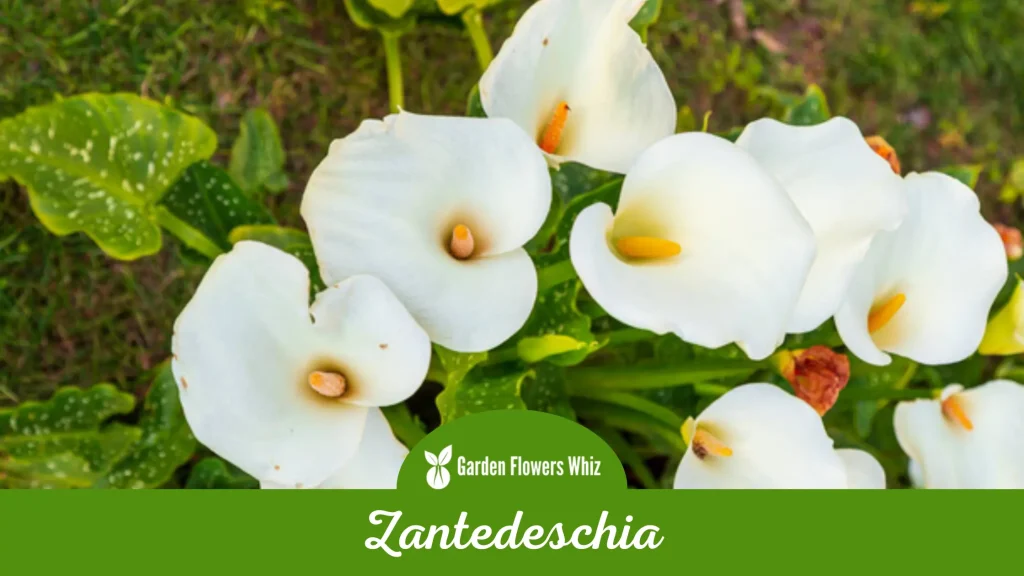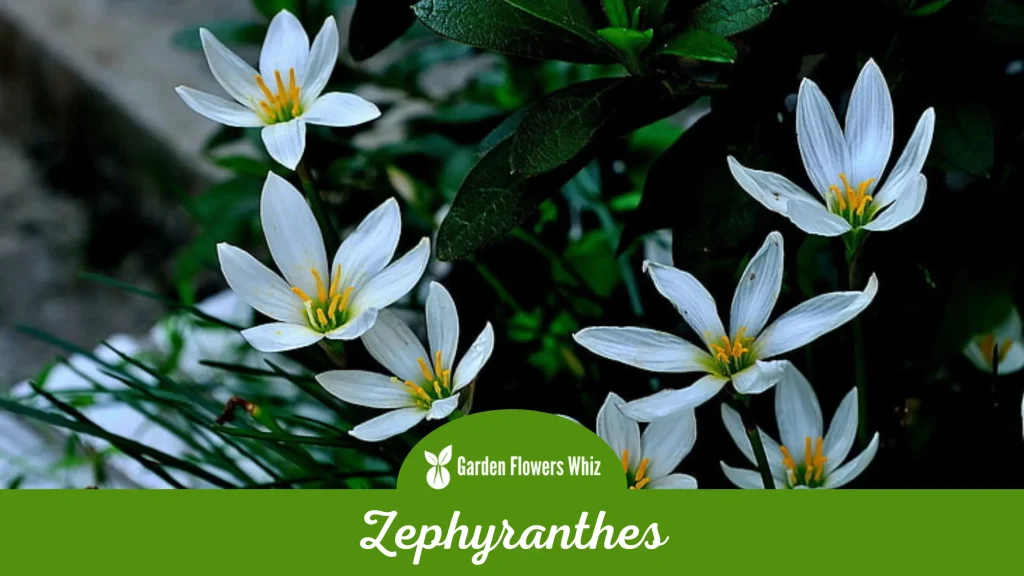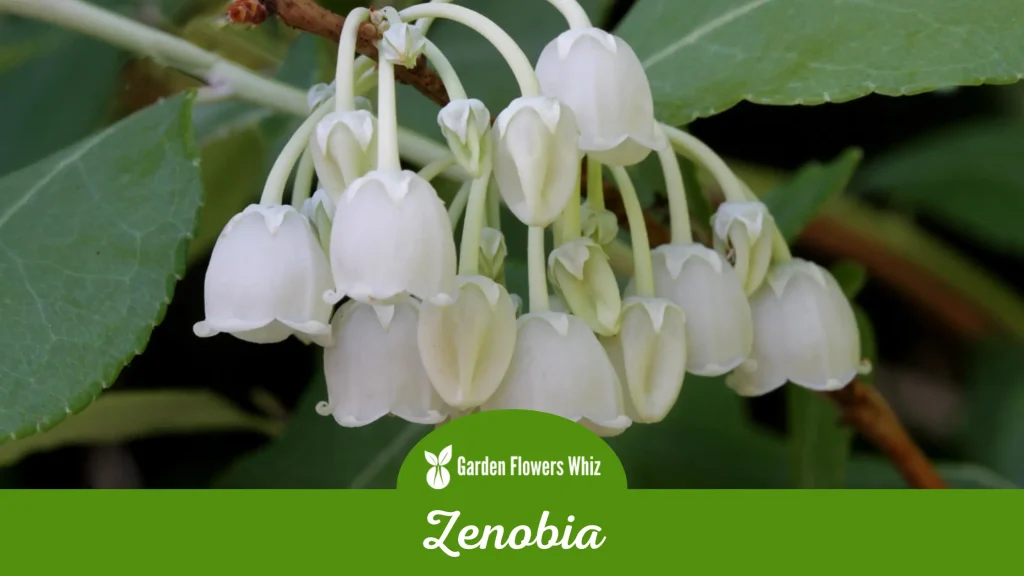When it comes to flowers, we tend to think of the usual suspects, like roses, daisies, and sunflowers. But have you ever stopped to consider the lesser-known blooms, like flowers that start with Z?
While they may not be as commonly known, these flowers have their own unique beauty and history that is worth exploring. We will delve into the world of flowers that start with Z, uncovering their meanings, origins, and cultural significance.
From the mysterious Zantedeschia to the vibrant Zinnia, each flower has its own story to tell. So, whether you’re a flower enthusiast or just looking to expand your botanical knowledge, read on to discover the hidden treasures of the floral world.
Keep Reading:
- Flowers That Start With U
- Flowers That Start With V
- Flowers That Start With W
- Flowers That Start With X
- Flowers That Start With Y
List Of Flowers That Start With Z
1. Zygopetalum

Zygopetalum is a beautiful and exotic orchid genus native to South America and known for its stunning and fragrant flowers. These epiphytic plants are usually found growing on the branches of trees in the rainforests of Brazil, Paraguay, and Argentina.
Zygopetalum blooms are large, with bold and bright colors and a sweet fragrance that makes them popular with gardeners and florists around the world.
The flowers typically have five sepals and petals that are arranged in a symmetrical pattern, with a large, frilly lip that attracts pollinators.
Zygopetalum orchids come in a wide range of colors, from pink, purple, and white to bright reds and yellows, and are easy to grow in a warm, humid environment.
With their striking beauty and intense fragrance, Zygopetalum orchids are a popular choice for special occasions, such as weddings and other celebrations.
2. Zantedeschia

Zantedeschia, commonly known as calla lilies or arum lilies, is a genus of flowering plants native to southern Africa. They are highly valued for their stunningly beautiful flowers and are often used in flower arrangements and wedding bouquets.
The plant has trumpet-shaped flowers that come in a range of colors, including white, yellow, pink, and red. The plant’s large, glossy, arrow-shaped leaves add to its appeal, making it a popular ornamental plant in gardens and homes.
Zantedeschia thrives in moist, well-drained soil and prefers partial shade to full sun. In their native habitat, they grow along riverbanks and in marshy areas, and they can tolerate a wide range of temperatures.
Calla lilies are not just known for their beauty but also for their symbolism. They are often associated with purity, holiness, and faithfulness, making them popular for religious events and ceremonies.
3. Zinnia Elegans

Zinnia elegans, commonly known as the Zinnia, is a popular garden flower that belongs to the Asteraceae family. Native to Mexico, it is an annual plant that grows up to 4 feet tall and produces brightly colored flowers.
The plant has sturdy stems with dark green leaves that are either ovate or lanceolate. The flowers of the zinnia are of various types, ranging from single to double-flowered, and are found in a wide range of colors, including white, yellow, orange, pink, red, and purple.
They bloom in summer and continue to do so until the first frost. These flowers are easy to grow and care for, making them a favorite of gardeners and landscapers.
Zinnias are also popular for cut flower arrangements, making them a favorite of florists. They attract butterflies and other pollinators, making them a great addition to any garden.
4. Zephyranthes

Zephyranthes, commonly known as rain lily, is a small genus of bulbous flowering plants in the Amaryllidaceae family. The name “Zephyranthes” comes from the Greek words “zephyros,” meaning west wind, and “anthos,” meaning flower.
The common name, “rain lily,” refers to their habit of blooming soon after heavy rainfall. These dainty flowers are native to the Americas and come in a range of colors, including pink, yellow, white, and red.
Zephyranthes bulbs are easy to grow and care for, making them a popular choice for gardeners. They prefer well-draining soil and full sun to partial shade.
These bulbs can be planted in groups or clusters and, once established, will naturalize, spreading and forming large patches. Rain lilies bloom in late summer to fall, and their flowers only last a few days, but they are produced in great profusion, making for a stunning display.
With their delicate and colorful blooms, Zephyranthes can add a touch of elegance to any garden or landscape.
5. Zenobia

Zenobia is a small genus of flowering shrubs in the heath family, Ericaceae, that contains only two species, Zenobia pulverulenta, and Zenobia speciosa.
These shrubs are native to eastern North America and are known for their ornamental value. Zenobia produces fragrant white to pink bell-shaped flowers that appear in large clusters in spring and summer, which makes it an attractive option for gardeners.
The plant’s leaves are also noteworthy for their texture, featuring a hairy underside and a smooth upper surface that has a waxy appearance.
The leaves turn a rich bronze-red color in the fall, providing a bright contrast to the flowers. Zenobia prefers acidic, well-drained soil and partial to full sunlight and can grow up to six feet tall.
Due to their showy flowers, attractive foliage, and ease of cultivation, Zenobia is a popular choice among landscapers, particularly in the southeastern United States.
In Summary
In conclusion, flowers that start with Z may be rare, but they hold a special place in the world of flora. From the exotic Zantedeschia to the delicate Zinnia, each flower offers a unique beauty that is worth exploring.
While it may be tempting to stick to the more popular flower varieties, taking the time to discover these lesser-known blooms can be a rewarding experience.

Stacey Hernandez is a seasoned botanist with over 16 years of experience in the field. Her passion for plants and their intricate workings began at a young age, and she has since devoted her life to studying and understanding them.
Stacey’s expertise extends to a wide range of plant species, from delicate flowers to towering trees. As the founder of Garden Flowers Whiz, Stacey has created a platform for plant enthusiasts to seek guidance and advice.
Her website is a go-to resource for those seeking answers to their gardening dilemmas, whether it’s how to care for a particular plant or which species to choose for a specific climate.
